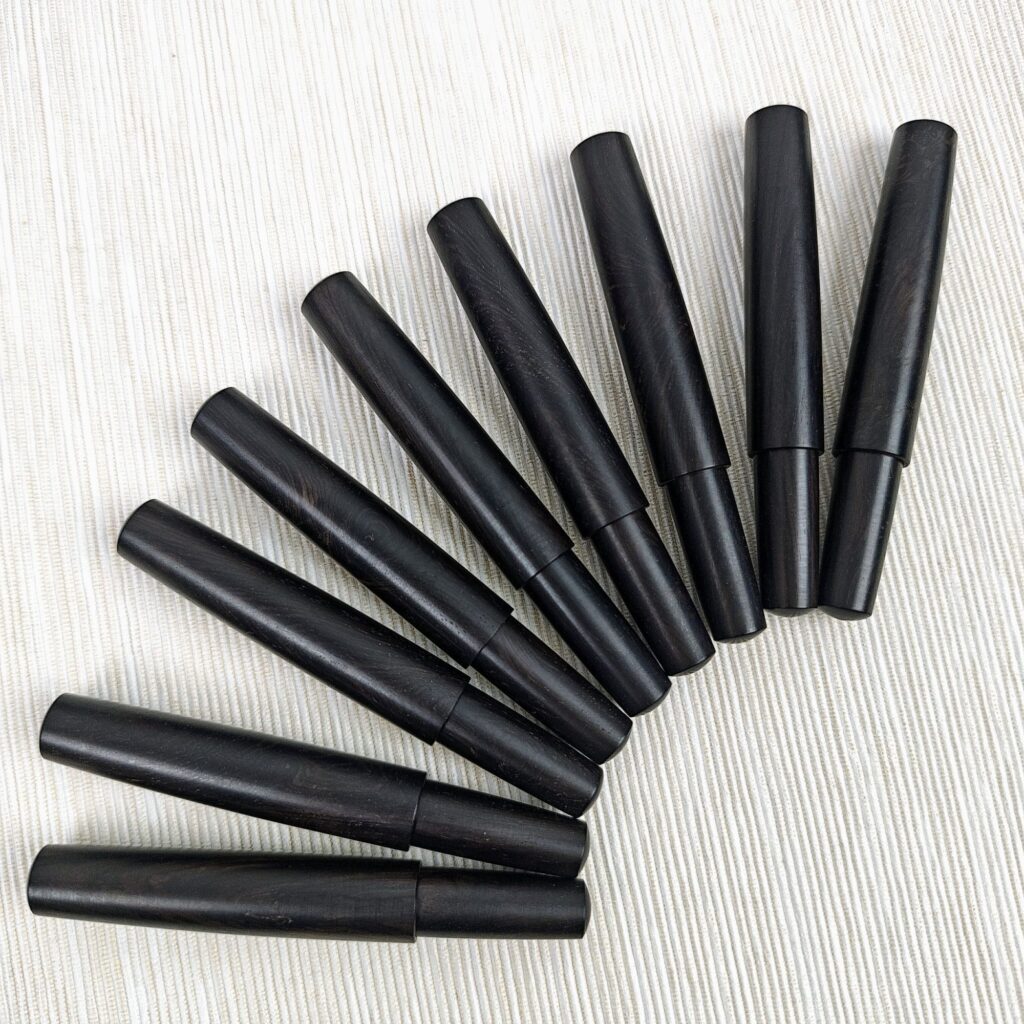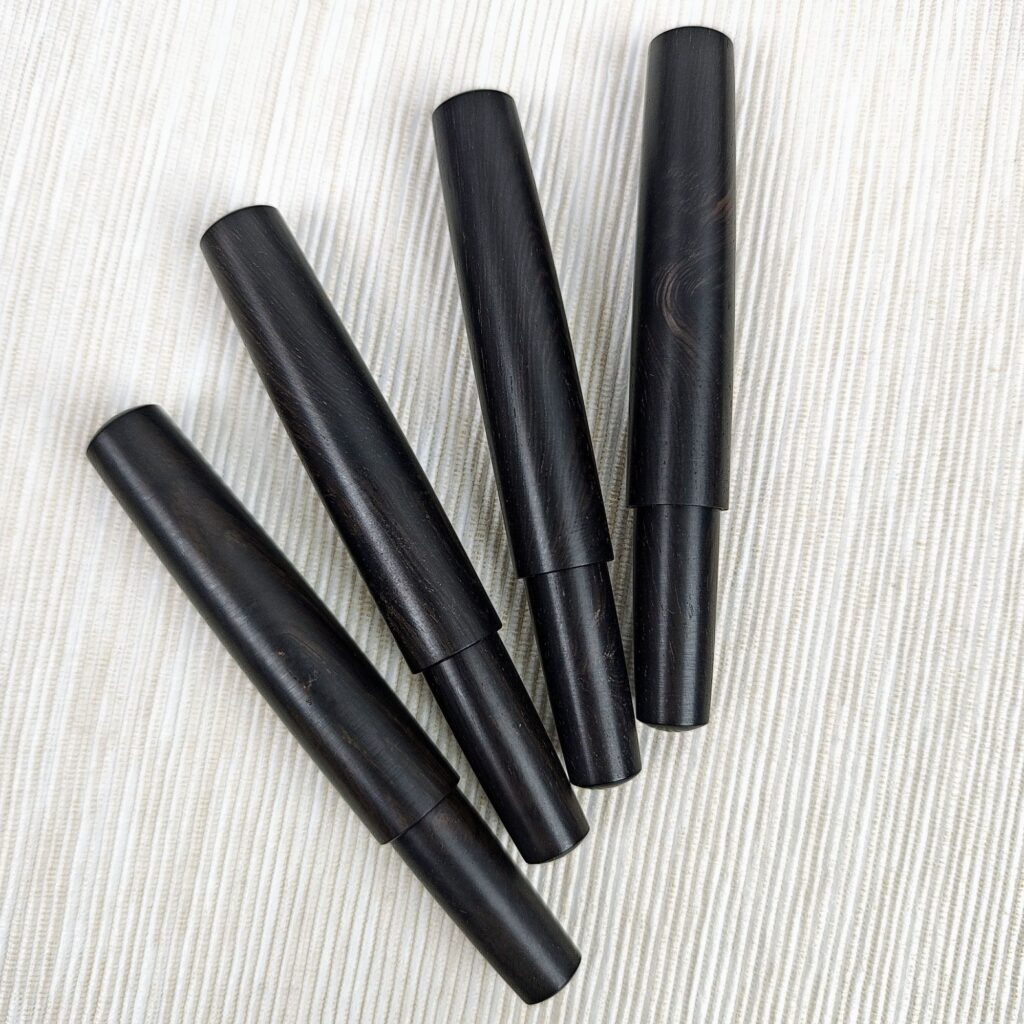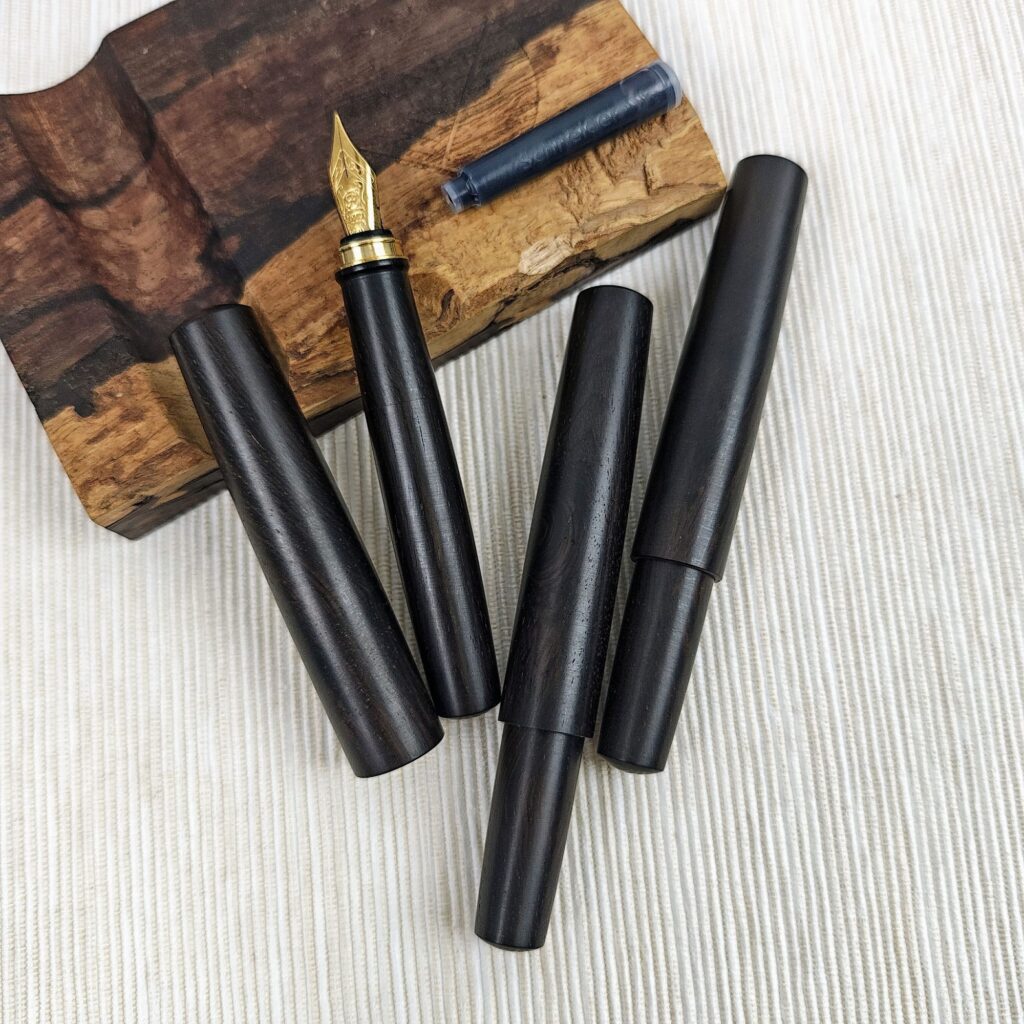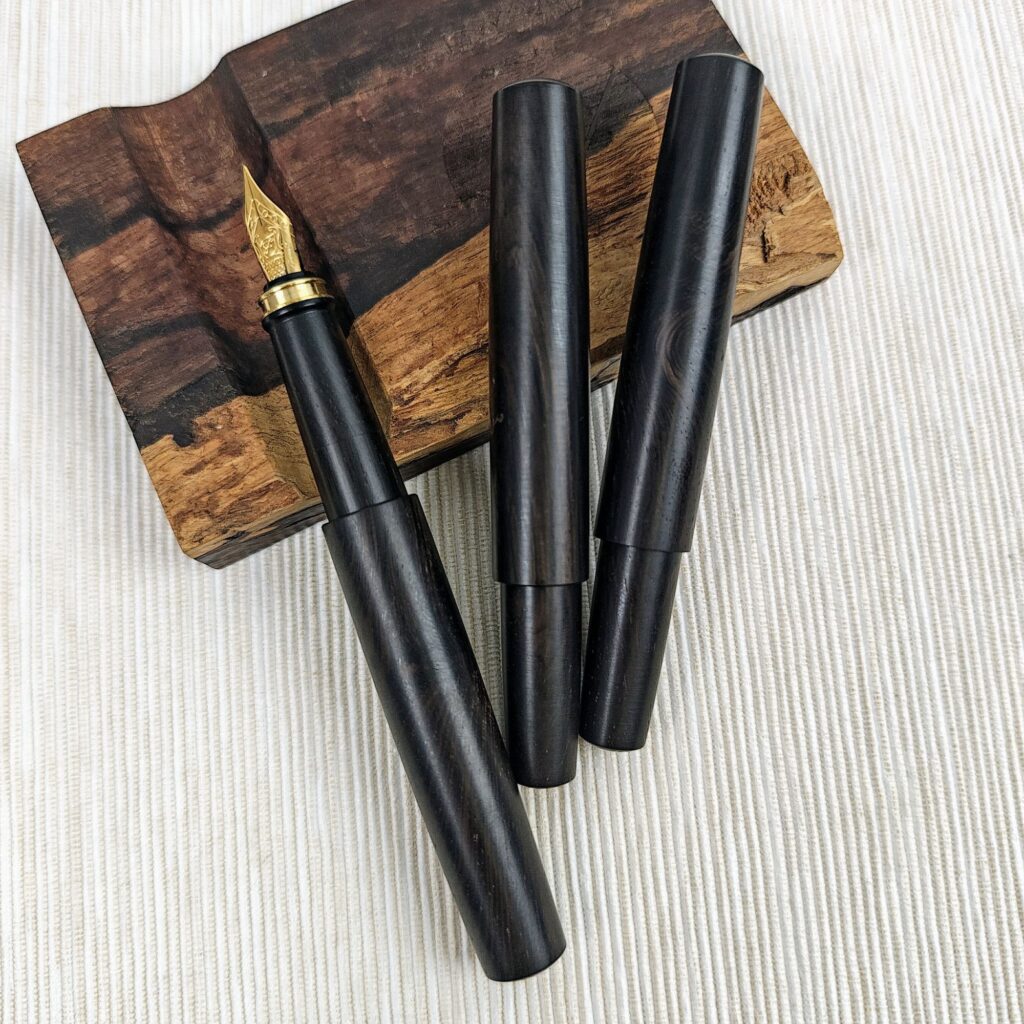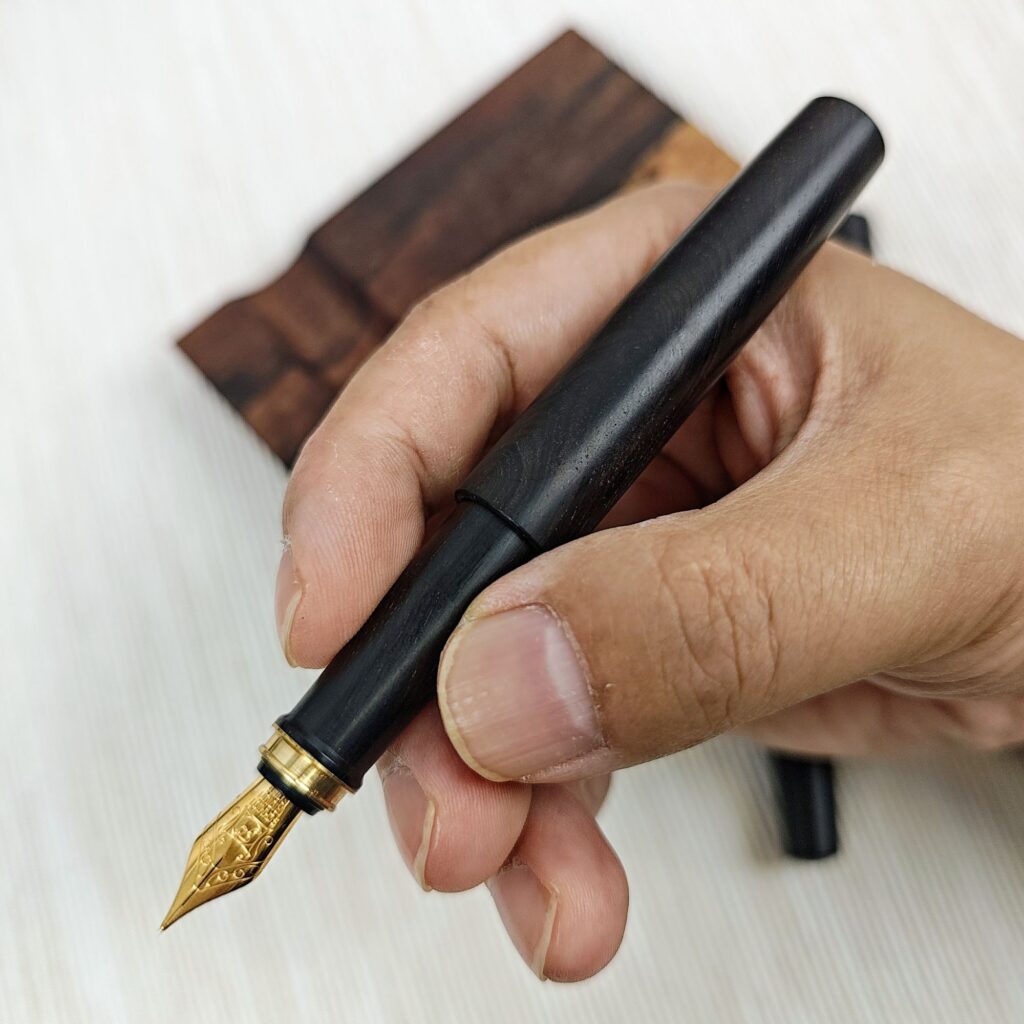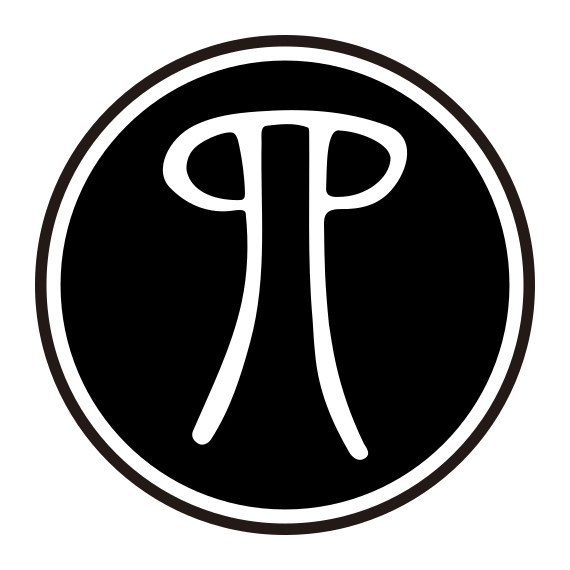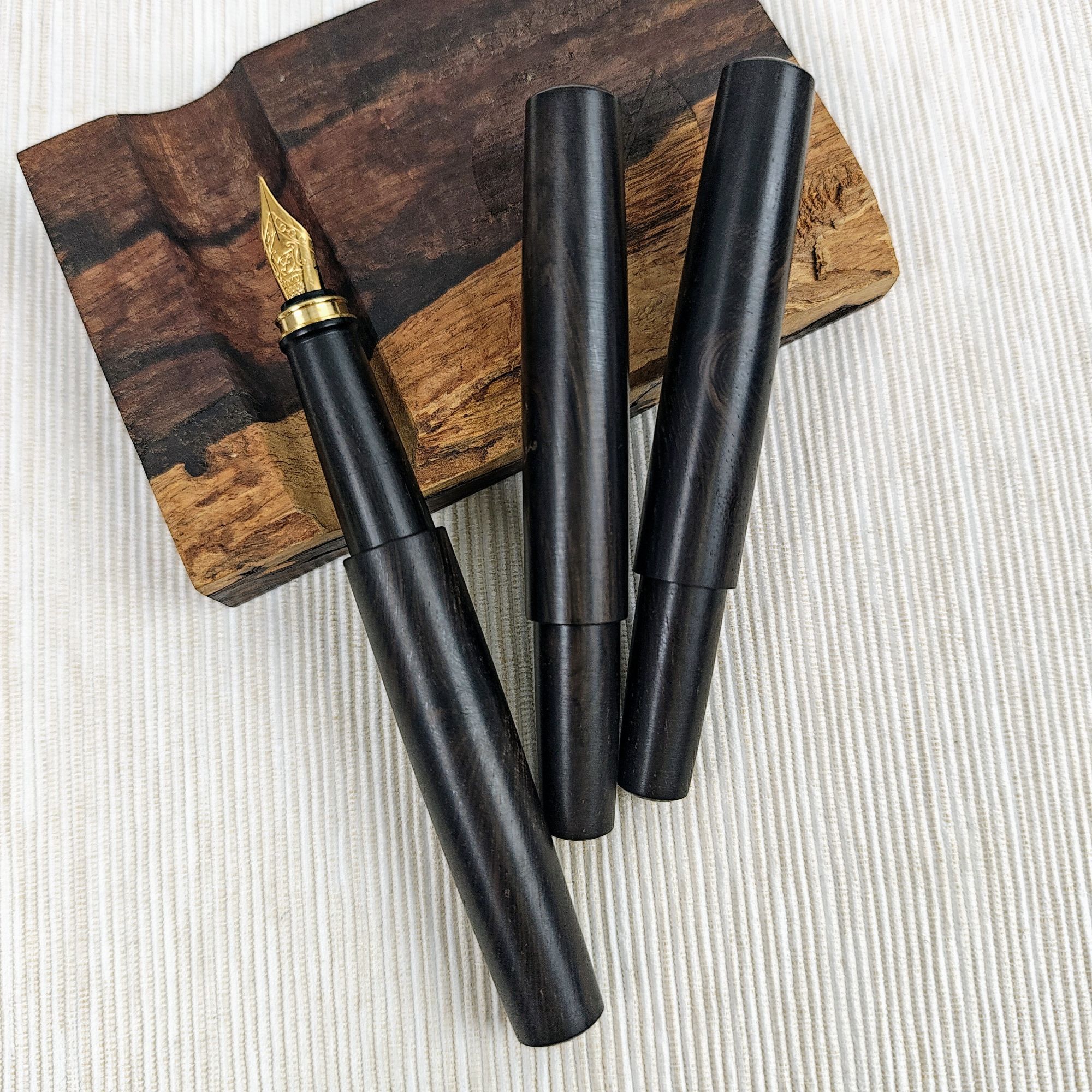I’ll admit it – when I first started working with ebony, I was intimidated. This is the wood that’s been making luxury furniture for centuries. Could I do it justice in a fountain pen?
Why Ebony Has Been Prized for Centuries
Here’s what makes ebony special:
Ebony isn’t just another dark wood. For over 4,000 years, it’s been the premium choice for high-end furniture and musical instruments. There’s a reason Egyptian pharaohs chose it for their most treasured pieces – this wood has serious presence.
But here’s what really matters for fountain pen users: ebony feels substantial without being heavy, and it ages beautifully.
The Look – More Complex Than “Just Black”
When people hear “ebony,” they think pure black. That’s not the whole story.
Pure Ebony (All Black):
Most of our ebony pens are made from the heartwood – deep, consistent black throughout. These have that classic, understated elegance. Perfect if you want something sophisticated that doesn’t call attention to itself.
Ebony with Sapwood (The “White Edge”):
Here’s where it gets interesting. Some ebony pieces include the sapwood – the lighter outer layer that ranges from cream to golden yellow. In the pen world, we call this “white edge” ebony.
Honestly? The sapwood pieces are my favorites. Each pen becomes completely unique. You might get subtle golden streaks, dramatic cream bands, or everything in between. No two are ever identical.
What This Means When You’re Writing
The practical reality of using an ebony pen:
The Feel
Ebony is dense but not heavy – it has this perfect weight balance that makes long writing sessions comfortable. The surface is naturally smooth, but not slippery. Your fingers grip it naturally without any effort.
The Durability
This is tough wood. I’ve seen ebony pens that are decades old and still look pristine. It doesn’t dent easily, doesn’t show wear marks, and actually gets smoother with use.
The Character Development
Unlike softer woods, ebony doesn’t change dramatically over time. What you get is what you keep – which some people prefer. It’s reliable, consistent, and always looks polished.
Pure Black vs. Sapwood: Which Should You Choose?
Go with pure black if:
- You want classic, timeless elegance
- You prefer consistency over uniqueness
- You like understated luxury
- You want something that matches any setting
Choose the sapwood version if:
- You want a pen that’s absolutely unique
- You appreciate natural wood grain patterns
- You like conversation starters
- You don’t mind a bit more visual drama
Real talk: The sapwood versions cost the same but feel more special because no two are alike. I’ve had customers specifically request “the one with the most interesting grain pattern.”
How Ebony Compares to Other Woods
I work with many different woods, and each has its strengths:
- Ebony is the most formal – it has that inherent dignity
- It’s among the most durable – this pen will outlast most others
- It’s the most consistent – what you see is what you get, year after year
- It has the most heritage – you’re holding centuries of craftsmanship tradition
The Reality About Working with Ebony
Let me be honest about the challenges:
True ebony is getting harder to source responsibly. The best pieces come from sustainably managed forests, which limits supply and increases cost. But when you hold an ebony pen, you understand why it’s worth it.
The wood is also demanding to work with. It’s hard, dense, and unforgiving. One wrong move with the CNC machine, and the piece is ruined. But that difficulty is part of what makes each finished pen feel special.
Caring for Your Ebony Pen
Good news: ebony is low-maintenance.
- Just wipe it clean – the natural density resists stains and moisture
- No special oils needed – ebony maintains its appearance naturally
- Avoid extreme temperature changes – like any fine wood, sudden heat/cold isn’t ideal
- Store normally – no special requirements
Is Ebony Right for You?
You’ll love ebony if:
- You appreciate traditional luxury materials
- You want something that ages gracefully
- You prefer substantial feel without excessive weight
- You like the idea of using the same wood as historical craftsmen
Consider other options if:
- You prefer lighter, more casual materials
- You want wood with stronger natural fragrance
- Budget is a primary concern
- You like materials that change dramatically over time
The Bottom Line
Ebony isn’t just about prestige – though it certainly has that. It’s about getting a pen that feels right in your hand, looks professional in any setting, and will still be beautiful decades from now.
When I hand someone their first ebony pen, there’s usually this moment of recognition. They immediately understand why this wood has been treasured for thousands of years. It just feels important.
The sapwood versions add that extra layer of uniqueness – you’re not just getting a premium material, you’re getting a one-of-a-kind piece that no one else will ever have exactly.
Interested in seeing our ebony fountain pen collection?
Common Questions About Ebony Fountain Pens:
Q: Is the sapwood (white edge) as durable as the pure black?
A: Yes, it’s all from the same tree. The lighter sapwood is just as strong as the heartwood.
Q: Will the contrast between black and white fade over time?
A: No, that contrast is permanent. If anything, it becomes more defined with age.
Q: How can I tell if it’s real ebony?
A: Real ebony is surprisingly heavy for its size and has that distinctive dense, fine grain. Fake ebony usually feels lighter and less substantial.
Q: Do you choose the grain pattern, or is it random?
A: For sapwood pieces, I hand-select each piece to ensure interesting, balanced patterns. No two are ever identical.
